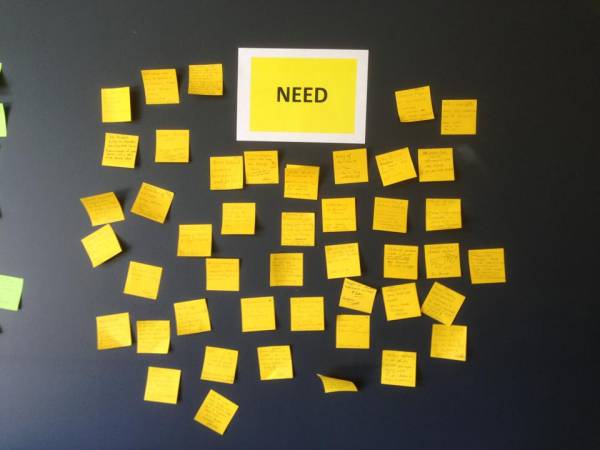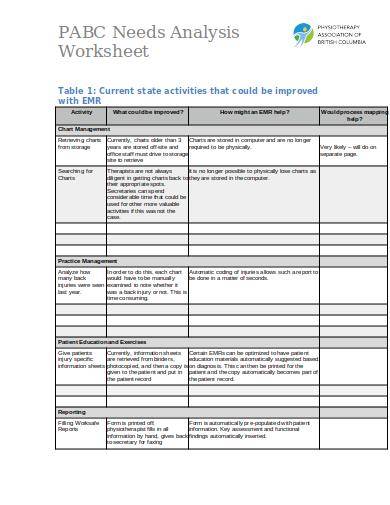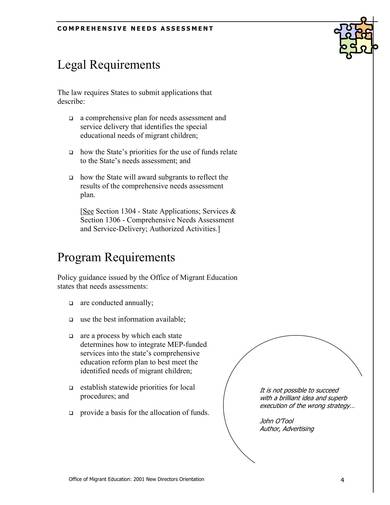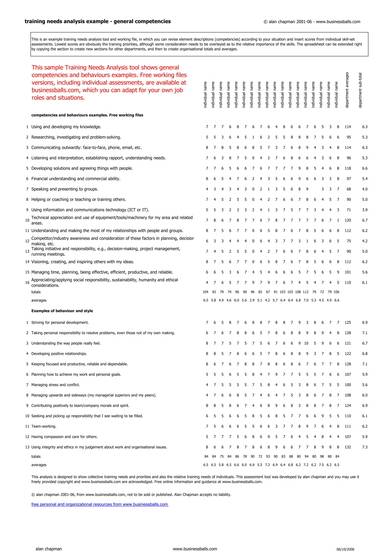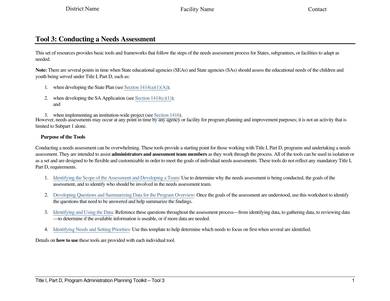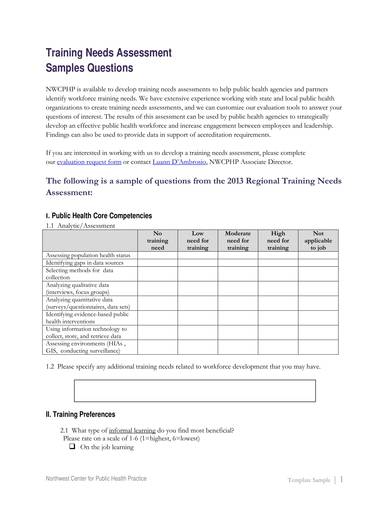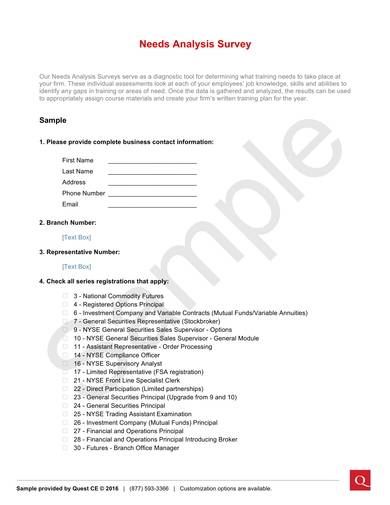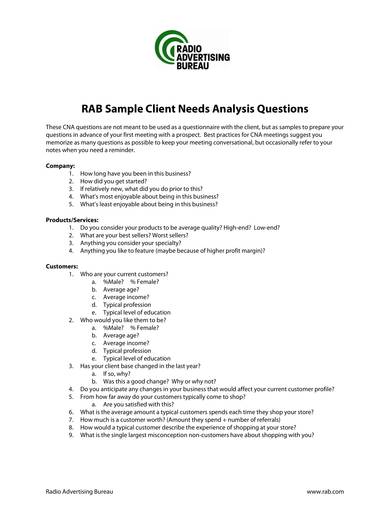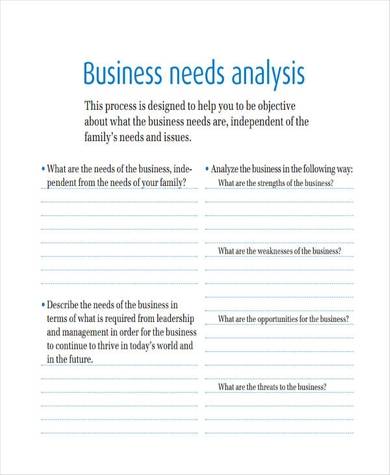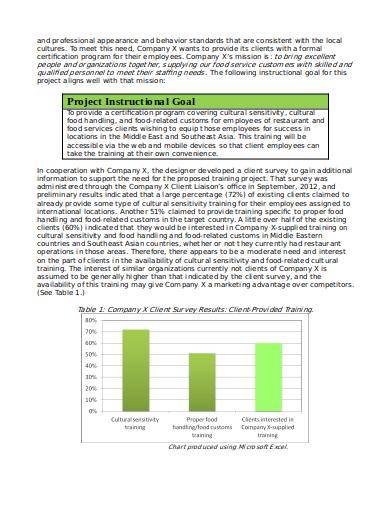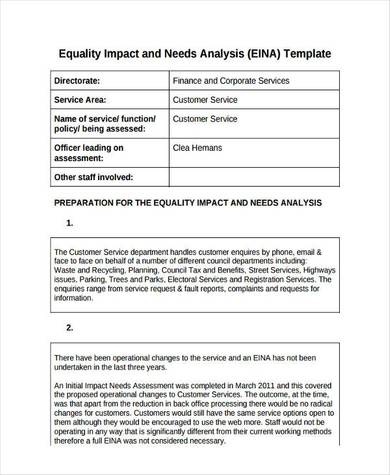An analysis is defined as the process of breaking down something complex into something smaller so that they can be better understood. An analysis is conducted if there is a need to find the cause of something so that the appropriate response or action can be taken. An example is a needs analysis. As its name implies, a needs analysis is done to identify certain needs that will help in pointing out the best possible action that will answer to those needs.
What Is a Needs Analysis?
A needs analysis is systematic process of identifying the needs of an organization. Once the needs or gaps of the organization has been identified, a series of steps are followed to help find a solution to fix the gap and provide the training needs of the organization’s employees. Needs analysis is also referred to as needs assessment or as gap analysis. There are three main parts in a needs analysis, namely initiation, data collection and analysis, and final producion. A needs analysis is important because is helps a team of employees to become more effective with their jobs which is essential for an organization’s progress and growth.
The Good and the Bad
There are two sides to every story and it pays to know which side is beneficial to your cause or goals. While a needs analysis is kown to provide a lot of advantages to many organizations, it is not perfect so it still has flaws that one should be aware of. Learning of both the good and the bad side of a needs analysis is the best thing to do. You can decide which side to take after you have read about both sides.
It’s common to always know first about what is good or what the advantages are. A business needs analysis is a great help, especialy in large businesses, because it helps identify the things that is preventing the business from achieving its goals. Through the analysis, the gaps that are holding them back are exposed paving the way to finding the appropriate solution. As a result to identifying the gaps and finding a solution, work productivity is improved, as well as he quality of the services provided.
Having a needs analysis conducted for your business is already something to be proud of and here are the reasons why: it is time consuming and costly. While it is something to be proud of knowing that you can afford them, these things are also the disadvnatges of performing a needs analysis. The assessment may take some time and by the time it is completed, some things may have already changed and the assessment may turn out to be obsolete. Conducting the analysis doesn’t come cheap. If you need reliable and effective data, then you really need to shell out a resonable amount of money.
Needs Analysis Samples
Aside from providing a good source of reference materials, samples are also great tools for learning. You can check out the samples we have gathered below and learn from them.
1. Sample Needs Analysis Worksheet
2. Sample Comrehensive Needs Assessment Template
3. Sample Training Needs Analysis Tool
4. Sample Needs Assessment Template and Guide
5. Training Needs Assessment Sample Questions
How to Conduct a Training Needs Analysis
Here are a few steps that will serve as your guide when conducting a training needs analysis.
Step 1: Study important details about training needs analysis.
Doing research and studying about the needs analysis to be done is an essential first step to ensure that your plans or actions are correct from the start. If you already know the important details, it still pays to do a short review.
Step 2: Identify the needs of the organization.
After teaching yourself about the important points of a training needs analysis, the second step is to identify the needs of your organization. These needs are things or instances that are preventing your organization from achieving its goals. On what things are your employees good at and on what things do they need help with? Make a list of your findings, including each employees skills and educational needs.
Step 3: Perform a gap analysis.
In a gap analysis, the employee’s actual performance is compared to that of the desired performance. This helps determine how big the gap is between the two and helps point out the required training options. Gap analysis templates already have sample survey questionnaires, which makes the task eaiser and more convenient to do.
Step 4: Generate a list of training options.
The gap analysis performed will yeild a number of training options that will help fill in the identified gap in learning or skills. Create a list of these training options and pick out the option that best fits your organization’s needs.
Step 5: Report your findings.
Have your findings documented and polished before you have it reported. Your organization will know and understand what needs to be done once you have it reported. Make sure to create a thorough report together with your recommendation.
6. Sample Needs Analysis Survey
7. Sample Client Needs Analysis Questions
8. Sample Business Needs Analysis
9. Project Scope & Needs Analysis Report
10. Customer Service Needs Analysis Sample
Conduct an effective needs analysis using the intrsuctions and samples that you can find here. With a lot of practice, you will be able to conduct a needs analysis using the steps that you have customized and yeild improved results. So keep exploring and never stop learning. You may also be interested in realtd topics, like value analysis, research analysis, and process analysis.
Related Posts
FREE 10+ Analysis of Alternatives Samples in PDF
FREE 10+ Failure Mode and Effects Analysis Samples in PDF
FREE 10+ Make or Buy Analysis Samples in PDF
FREE 10+ Fishbone Root Cause Analysis Samples in PDF
FREE 11+ Cost Volume Profit Analysis Samples & Templates in PDF | MS Word
FREE 6+ Corporate Portfolio Analysis Samples in PDF
FREE 10+ Fault Tree Analysis Samples in PDF
FREE 10+ Comp Analysis Samples in PDF
FREE 10+ Fishbone Analysis Samples in PDF
FREE 10+ Individual Swot Analysis Samples in PDF
FREE 10+ 5 Year Analysis Samples in PDF
FREE 10+ Benefit Costs Analysis Samples in PDF
FREE 10+ Job Hazard Analysis Samples in PDF
FREE 10+ Primary Source Analysis Samples in PDF
FREE 10+ Critical Path Analysis Samples in PDF
